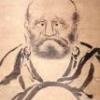-
Posts
2,871 -
Joined
-
Last visited
-
Days Won
12
Shugyosha last won the day on September 16 2025
Shugyosha had the most liked content!
The recent visitors block is disabled and is not being shown to other users.

Shugyosha replied to Brian Dent's topic in Nihonto

